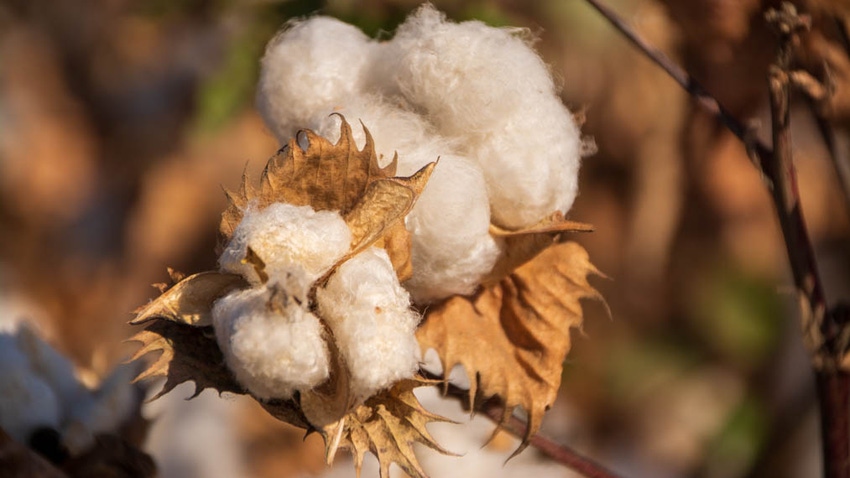
California’s cotton acreage this year could equal that of Arizona’s, a first for both states as an extended rainy season in California prevented much of the state’s higher-value Pima crop from being planted.
Total cotton acres in each of the two western states could shrink to under 100,000, a first for California in 100 years. The last time California produced less than 100,000 acres was 1923, when growers there harvested from 83,000 acres.
Preliminary numbers reported by the California Cotton Ginners and Growers Association says about 79,000 acres of Pima and 20,000 acres of Upland cotton were planted earlier this season. Those numbers could fluctuate plus or minus 10%, according to the association.
Arizona farmers planted over 96,000 acres of cotton this year, according to the Arizona Cotton Growers Association. Of that, over 80,000 acres is Upland cotton.
California once boasted well over 1 million acres of cotton harvested annually. That happened across 24 seasons between 1951 and 1997, according to the USDA. The number peaked at over 1.6 million acres in 1979. Arizona’s cotton acreage peaked in 1953 at 690,000 acres. The best each of the two states have done in the past 10 years is 302,000 in California and 174,000 in Arizona in 2017.
Rain and cold
The lack of planted acres in California this year can be largely blamed on late-season rain and cool weather. Arizona’s acreage decline can be blamed on water availability. Pima has been the more popular type planted in California because of its higher grower returns. This year that was tough for California growers as rain and cool soil temperatures prevented some from planting the longer season crop.
Aaron Barcellos, who farms in the Los Banos area of California, said he was able to get in just under half of his intended cotton acreage because of the extended winter weather and cool soil temperatures.
A significant roadblock in this year’s California cotton acreage is the flooding of the Tulare Lake region. Heavy runoff from rain and Sierra snowmelt will prevent much of the lake bottom region from being planted to crops this year, including cotton. Other crops typically grown in the lake bottom region include safflower and canning tomatoes.
Jimmy Hook, agricultural commissioner and sealer in Kings County, Calif., home to much of the Tulare Lake region, said his office does not track regions within the county for specific crops, “so we will not have acreages in the lake bottom devoted to cotton.” Nevertheless, Hook said that pesticide permit data suggests that just under 40,000 acres of the lake bottom region is permitted for cotton.
Kings County tends to lead California each year in the production of cotton, accounting for anywhere from a third to one-half of the state’s total cotton crop, Hook said.
Southwest cotton trend
California typically accounts for most of the U.S. Pima cotton crop – the extra-long staple crop grown solely from West Texas to California. Much of that fiber is marketed in high-end linens and clothing. Cotton industry leaders at the recent Arizona cotton industry meeting suggested that Pima production this year could come in under 300,000 bales, well short of earlier projections of 400,000 bales.
As California goes, so too will the remainder of the Pima acreage planted across the Southwest. Rick Neuenschwander, head of market and product development for the Southwest, Gowan Cotton Company, said heavy rain and hail in the past few weeks likely destroyed half of the Texas and New Mexico cotton crop. Some of that was planted to Pima.
About the Author(s)
You May Also Like






